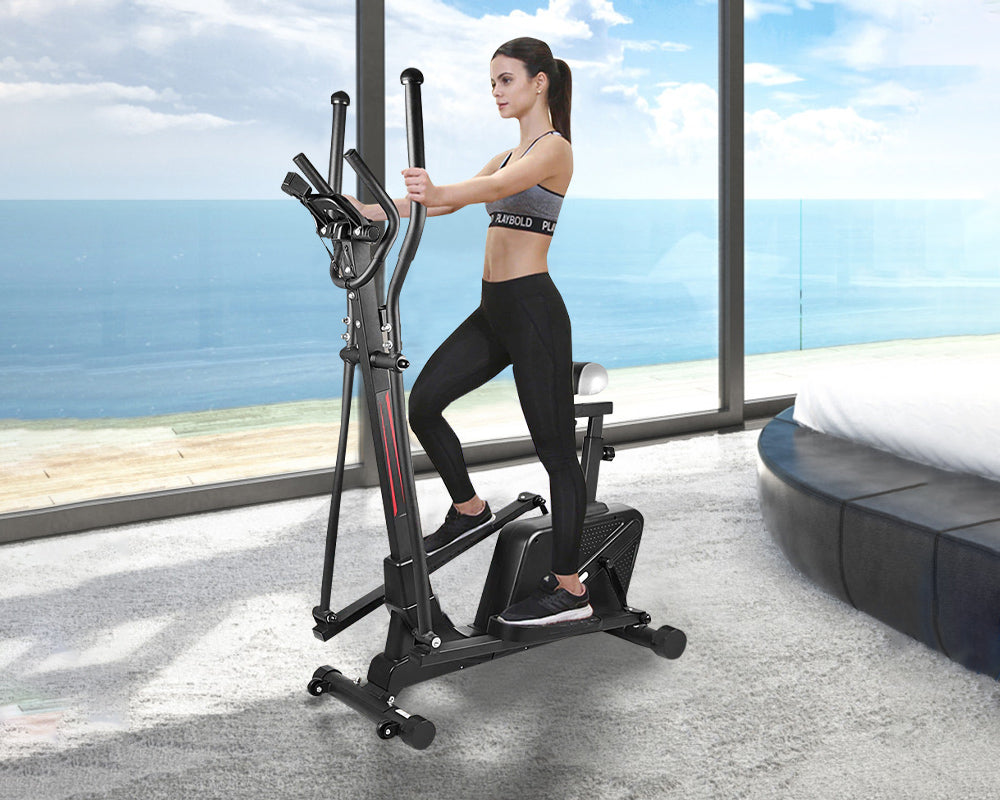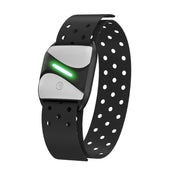Because an elliptical trainer has many benefits, it has gradually become a popular choice in many fitness enthusiasts' home gyms. It’s convenient to own an elliptical exercise machine and work out privately at home. But most of us wouldn’t want to see a bulky machine in the living room. The question is, can you put an elliptical exercise machine on the second floor? Keep reading if you need to know more about transferring an elliptical exercise machine to an upper-level floor. I’m also providing a few tips to make this move more worry-free.
Is putting an elliptical exercise machine upstairs safe?
I know how putting a heavy machine on the second floor can be worrisome. You might be risking your safety or the structural integrity of your home. So, I’ve rounded up facts that objectively answer the question, can you put an elliptical exercise machine on the second floor? These should put your mind at ease.
1. Most modern floors can support a lot of weight
Find out your flooring’s load capacity if you’re still uncertain whether it is safe or not for an elliptical exercise machine. Generally, a modern structure can support about 244.12kg/m2 (or 50lbs/ft2). That means a 9m2 bedroom floor can support up to 2000kg before putting it at structural damage risk. That’s a lot of furniture and appliances in a small room and strong enough to support any gym equipment. Also, most builders do not build structures based on bare minimum weight capacity. However, this conclusion may not apply to old buildings and homes. Some surfaces, especially wooden floors, may also creak or shake with heavy movement. It’s best to hire an engineer or consult your residence building management in this case. You can also call a local engineering company and ask its team about the building code in your area. Their expert opinion should reassure you and make it easy to find the best upper floor spot for your elliptical exercise machine.
2. Modern floorings can support an elliptical exercise machine with you on it
The weight range of home elliptical exercise machines is from 30 to 90 kg, which is several kilos lighter than the heaviest treadmill. And in Australia, an average 179cm-tall male weighs 88.3kg, while an average 165cm-tall female weighs 72.6kg. So, if you are walking on an elliptical machine, the combined weight would approximately be 178 kg. But your body weight can increase by 1.5 to 3 times more when you start jogging or running. Still, a well-made second floor with a 2000-kg weight limit will have no problem supporting you and your elliptical exercise machine.

Where should you place your elliptical exercise machine upstairs?
Now that the issue on “can you put an elliptical exercise machine on the second floor” is all settled, the next is to find the best spot for your machine. Also, is there a way to reduce the vibration and noise? Here are some tips you can apply.
1. Position your elliptical exercise machine on top of a floor joist
If you are familiar with your home’s floor plan, locate the supporting or load-bearing walls. These strong points of the floor have internal reinforcements to support lots of weight. Doing this also reduces the floor bounce you might encounter while pedaling. If there are no joists in your second-floor gym, place your elliptical trainer next to a wall. Floors closer to the wall are generally capable of supporting heavy loads.
2. Transfer it to carpeted flooring
The extra cushion can help soften the impact of exercise on the floor and spread the weight. You can add a rubber equipment mat between the elliptical exercise machine base and your carpeted floor for added protection if you like.
3. Look for a well-built but lighter elliptical exercise machine
A lightweight model is not always the best choice for second-floor placement. It’s because this elliptical exercise machine often generates more noise from vibration. But compared with a treadmill, elliptical exercise machines are quieter as there is minimal impact noise. Just make sure to maintain your elliptical exercise machine to avoid squeaking.
4. Go for a magnetic-based elliptical exercise machine
To date, two elliptical exercise machine flywheel types are available: the fan and the magnetic. The main difference between these two is the resistance adjustment. With a magnetic elliptical cross trainer, you increase the resistance by boosting the strength of the magnets through the console. On the other hand, you need to pedal faster to adjust the resistance of an air elliptical exercise machine. The problem is that the rotating fan generates more noise and vibration as you speed up. You can look for a quieter model if you want. But a magnetic one is generally more suitable for your second floor.

How can you put an elliptical exercise machine on the second floor safely?
There are two ways how to do this. One is by moving the elliptical exercise machine as a whole. The other is to disassemble it and then move its parts upstairs. The choice mainly depends on elliptical exercise machine weight, the size of your stairway and if you have someone to help you move the machine.
1. Move the elliptical exercise machine as a whole
Here’s what you have to do for this transport option. First, remove any obstacles in your way. Plan your move first, and then remove all furniture and appliances blocking your path. Second, tie its moving parts. You’ll need strong cable ties to secure the moveable arms and the foot pedals. Third, cover your elliptical machine with a furniture blanket. This step should protect your cardio machine and your walls from damage. It’s a must, even more so if you will deal with sharp turns or a narrow staircase later. Last, ask one or two moving buddies for help. It’s difficult, if not impossible, to move a whole elliptical exercise machine upstairs alone. So, ask someone to help you. Keep in mind that the heavier part of the machine is where the flywheel sits. So, when ready, have one or two persons lift the flywheel end while another carries the lighter side.
2. Move a disassembled elliptical exercise machine
This transport method is a lot easier but a bit messier. It’s also the best method if you plan to move your elliptical exercise machine on your own. First, refer to your instruction manual. Check how to disassemble your elliptical exercise machine. Some manuals may not be as visually detailed, though. In that case, consider taking photos of complex machine sections to make them easier to reassemble. Next, put small components in a clear plastic bag. Ideally, place nuts, bolts and screws in separate or labeled bags according to the machine section for faster reassembly. Last, place large parts in a box. Use bubble wrap or a furniture blanket to cover fragile components, like the console. Carry all the parts upstairs, and then reassemble them following the manual. Check your elliptical exercise machine brand website for assembly videos, too.
Can you put an elliptical trainer upstairs? We now know that this question is not a cause for concern. You can get a good workout with this cardio equipment in an upstairs bedroom or apartment building. Modern floor surfaces are stable enough to support your weight and the elliptical exercise machine.


